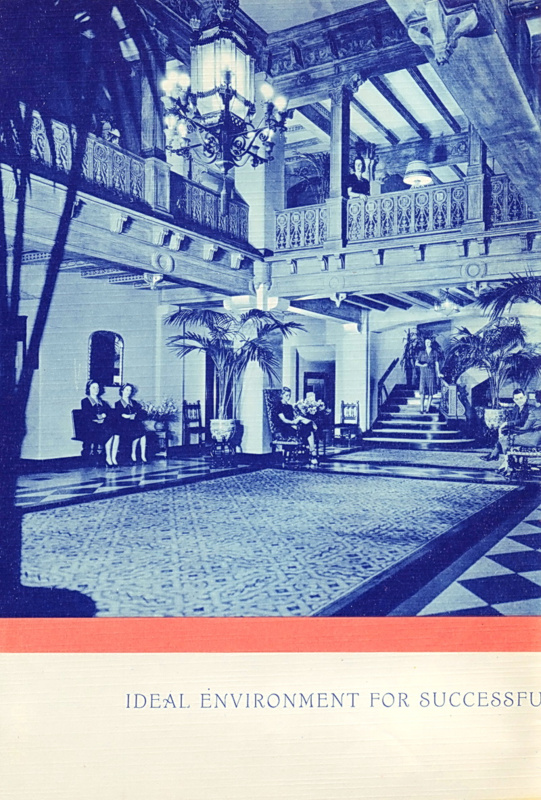10. Many Original Features of the Hotel Have Been Removed in Renovations

The flappers, Gibbs girls, and Powers models who stayed at the Barbizon throughout the 20th-century would hardly recognize it today from the inside. While the building’s exterior has retained its eclectic 1920s look, the interior has undergone multiple renovations starting in the 1980s under hotelier David Teitelbaum and continuing into the 1990s. In 1994, under owner Ian Schrager, the coffee shop, where J.D Salinger used to sit trying to pick up a date and where Sylvia Plath had breakfast, was leased to Equinox fitness along with the pool. A few years later, under new management and renamed The Melrose Hotel at the Barbizon, the pool was removed along with the recital room’s pipe organ. The iconic lobby mezzanine where the girls of the Barbizon would look down at the crowd of men waiting for their dates on a Saturday night now also became a remnant of the past. Today, the building is called The Barbizon/63 and is comprised of luxury condos.
In 2012, the Barbizon Hotel was designated a New York City Landmark for its high-quality architectural features and its cultural significance. The building retains its signature exterior features such as intricate, multi-colored brickwork and elaborate setbacks, a result of the 1916 zoning laws, accented by terra-cotta balconies and Gothic arches, The biggest difference to the exterior is the marquee that hangs above the main entrance on 63rd Street, which no longer reads “The Barbizon,” but simply the building’s address, 140.
Next, check out How 10 Famous NYC Buildings Got Their Names





